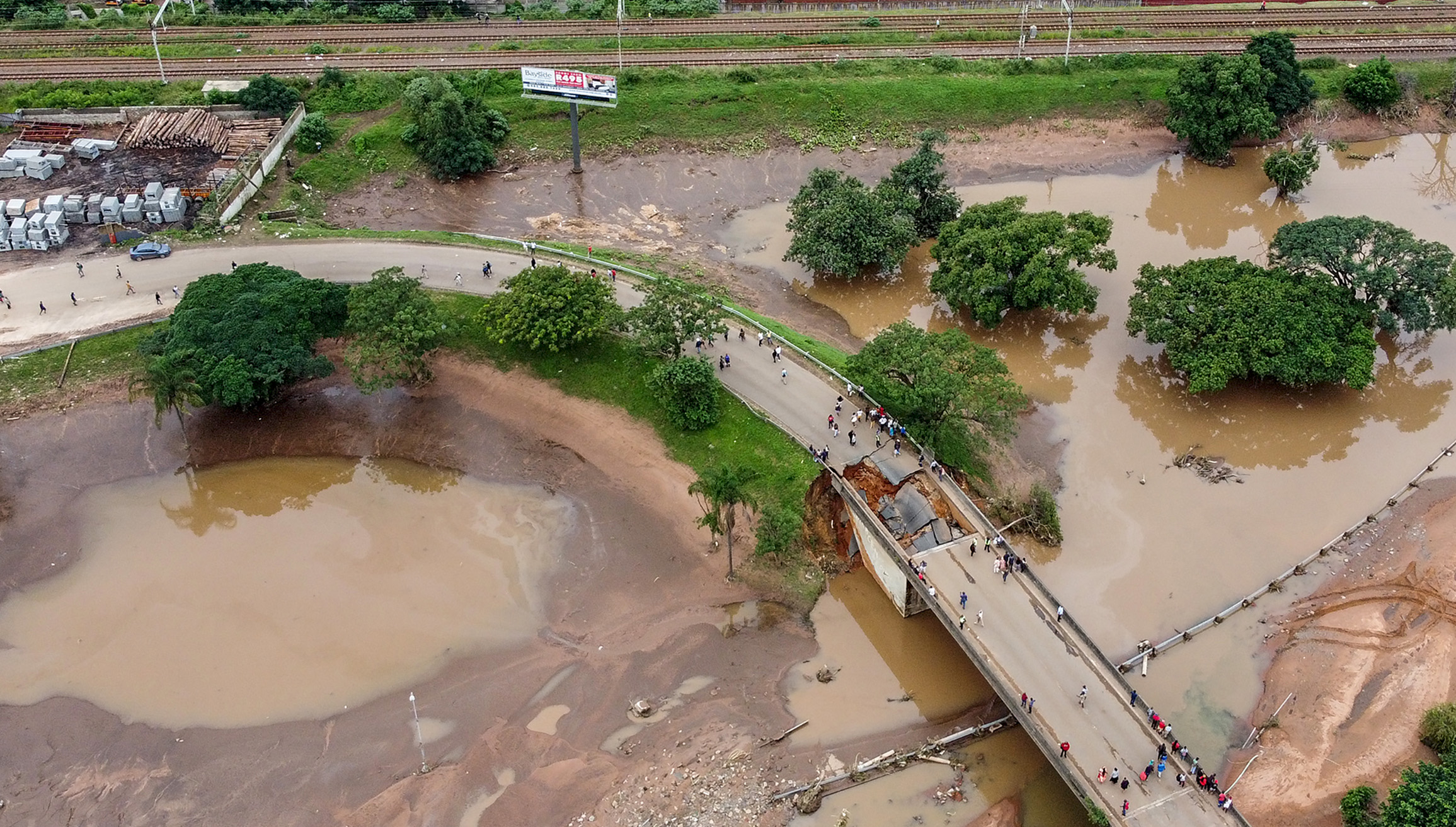When floods ravaged KwaZulu-Natal in 2022, they not only washed away roads and bridges, they swept away hope. Entire communities found themselves cut off from the world, their children unable to reach school, their sick unable to access healthcare, their dreams drowning in muddy waters. In the aftermath, as the South African government committed billions of rands to rebuild what nature had destroyed, something profound began to emerge from the devastation: the restoration of human dignity itself – a cornerstone of the African Union’s Agenda 2063 vision of “Building the Africa of our Dreams”.
Aligned to this, and guided by South Africa’s presidency of the G20 for 2025, the Public Investment Corporation (PIC) continues to channel billions of rands into mega infrastructure projects across African economies and to mobilise capital from other investment partners to set in motion development towards sustainable and inclusive growth. Given the infrastructure bottlenecks in South Africa, the PIC, through its Developmental Infrastructure South Africa mandate, seeks to direct funding towards public infrastructure projects. The PIC also manages a separate mandate – Developmental Investments for the Rest of Africa – focusing on infrastructure investments across the rest of the continent.
The world’s most influential financial leaders will gather in South Africa for the G20 Summit in Johannesburg in November, with the theme “Solidarity, Equality, Sustainability”. As part of its contribution to the G20, the PIC has commissioned a series of research papers to support the urgent need for investment in Africa. The continent needs between $130-billion and $170-billion annually to bridge its infrastructure gap. The first paper, Accelerating Infrastructure Development in Africa: Strategies to Reduce Lead Times, presents some startling realities but also analyses where investment and co-investment opportunities exist for development finance institutions (DFIs), asset managers and private capital.
It further reveals that 80% of infrastructure development projects stall before moving past the planning phase. A combination of regulatory hurdles, financing constraints, institutional weaknesses, corruption and a lack of professional skills stymie development and discourage investment. The research outlines a roadmap to overcome these barriers through four key pillars: policy reform, innovative financing, technological integration and capacity building.
Policy and regulatory reform are critical to breaking this cycle. Complex and lengthy approval processes, unclear land rights and weak inter-agency coordination inflate costs and timelines. The report advocates for streamlined project processes through single-window systems, digitised land registries and standardised contracts to reduce uncertainty for investors. It demonstrates how Rwanda’s simplified licensing and South Africa’s clear public-private partnership (PPP) regulations attract investment, particularly into renewable energy. Transparent procurement, real-time monitoring and anti-corruption measures can further enhance accountability, fostering investor confidence, reducing risk and ensuring projects align with national priorities.
Innovative financing is equally essential. Public budgets alone cannot meet Africa’s needs, necessitating private capital through PPPs, blended finance instruments and user-pay models. Morocco’s Noor Ouarzazate Solar Power Station exemplifies success, blending concessional loans and private investment to manage high technological risks. Risk mitigation tools, such as political risk insurance and credit guarantees from institutions like the African Finance Development Bank (AfDB) and the Multilateral Investment Guarantee Agency (MIGA), can de-risk projects, while local-currency bond markets and infrastructure bonds diversify funding. The report emphasises the requirement to align these financial instruments with local realities to ensure bankability, as seen in South Africa’s Renewable Energy Independent Power Producer Procurement Programme.
Technology offers transformative potential. Digital tools like Building Information Modelling, drones and AI improve project planning, monitoring and delivery. Data analytics and IoT can optimise resources and reduce delays but require standardised protocols and targeted skills development. Digital infrastructure, including cloud computing and data centres, is foundational to economic competitiveness, yet Africa risks falling behind without targeted investment. The report calls for enabling regulations and capacity building to close this gap.
Institutional capacity is the linchpin. Weak planning, procurement and oversight lead to cost overruns and project failures. The report recommends dedicated infrastructure acceleration units to fast-track approvals and coordinate agencies. Long-term training, mentorship and skills-transfer clauses in contracts can build local expertise, reducing reliance on foreign contractors. Chile’s Concessions Directorate and Rwanda’s Development Board show how independent agencies with technical expertise ensure continuity (even when political governments change) and bankability. Modernising public sector management through strategic planning and digital tools can further streamline delivery, aligning projects with sustainable development goals.
The socioeconomic costs of delayed infrastructure are stark. Underpowered energy systems, fragmented transport networks and inadequate water and digital infrastructure suppress productivity and limit competitive industries. Rural and low-income communities bear the brunt, facing limited access to reliable services. These gaps undermine job creation, education and health outcomes while deterring investors and eroding public trust.
The report’s actionable recommendations target governments, investors and DFIs. Governments should embed infrastructure in legal frameworks, digitise land governance and mandate transparent procurement. Investors must integrate regulatory and social due diligence, leverage blended finance and support local supply chains. DFIs should scale project preparation facilities, enhance public sector training and promote regional standards for cross-border projects. Short-term actions include fast-tracking approvals and deploying existing digital tools, while long-term strategies focus on sustainability, regional integration and equitable development.
The call to action is clear: Africa must act decisively to reduce lead times and unlock its infrastructure potential. Governments must provide stable policies, investors must bring capital and innovation, and DFIs must bolster preparation and risk mitigation. By embracing policy reform, innovative financing, technology and capacity building, Africa can transform its infrastructure landscape, fostering inclusive growth, resilience and a prosperous future aligned with South Africa’s G20 presidency themes (Solidarity, Equality and Sustainability) and the United Nations Sustainable Development Goals.
This is the time for bold action. DM
Brenton Lalu is an Africa specialist at the PIC.




 An aerial image of a broken section of the Griffiths Mxenge Highway next to Umlazi after floods wreaked havoc in Durban. 13 April 2022.
Photo: Shiraaz Mohamed.
An aerial image of a broken section of the Griffiths Mxenge Highway next to Umlazi after floods wreaked havoc in Durban. 13 April 2022.
Photo: Shiraaz Mohamed.